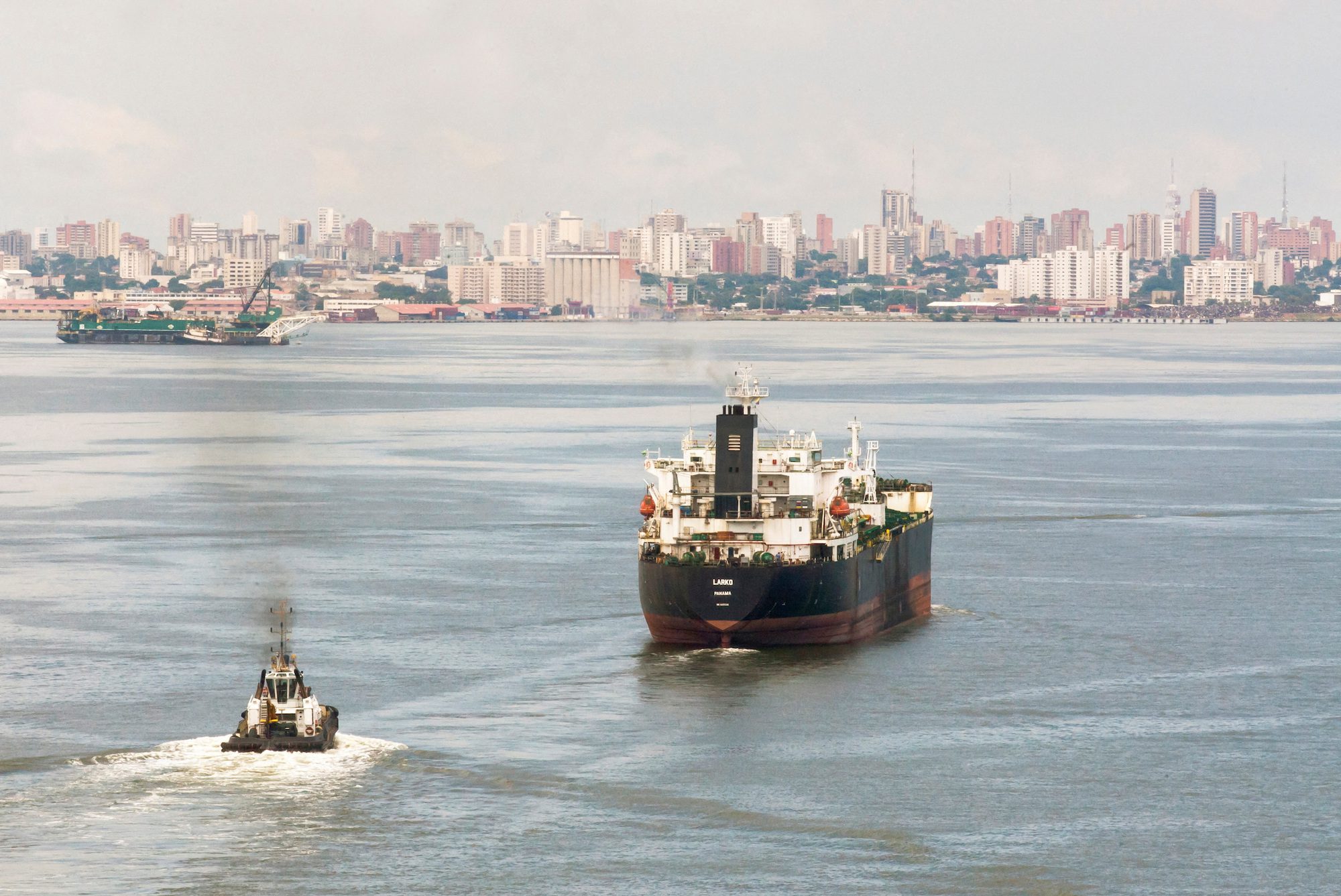By Rick Spilman, Old Salt Blog
Recently, the New York Times published Stowaways and Crimes Aboard a Scofflaw Ship, the first of a four part series, by Ian Urbina. At the core of the article, Urbina tells the story of two South Africans who have the misfortune to stowaway onboard a Greek reefer ship whose owner is notorious for shady dealings. Only one of the stowaways ultimately survives. The account is vivid, well researched and well told. Nevertheless, it doesn’t and really can’t capture the full scope of the problem of stowaways in shipping today.
The good news is that most shipowners and ship owning corporations are not the sort of shoddy fly-by night operators described in Urbina’s article. The bad news is that dealing with stowaways on shipboard is usually expensive, complicated and in some cases dangerous.
Stowaways are, almost without exception, poor and desperate. If they had more money there would have chosen a better way to leave their homeland. If they were not so desperate to leave, they might have stayed home rather that risk the hazards of a life as a stowaway. The hazards are quite real. In Urbina’s article, the two stowaways were forced off the ship into makeshift rafts to fend for themselves. One one survived the ordeal.
It can still be much worse. In 1992, nine West Africans stowed away on the MC Ruby. When eight of the stowaways were discovered, the Ukrainian officers and crew beat them with iron bars, shot and then dumped the stowaways in the Atlantic Ocean. Because one stowaway avoided detection and reported the massacre, the captain and the chief mate were convicted of murder and given life sentences, while three crew members were given 20 years for their parts in the killings. If the ninth stowaway had not survived, the officers and crew might literally have gotten away with murder.
Why would anyone treat stowaways with such brutality? The answer is primarily economic. Stowaways are very expensive to maintain aboard ship and even more expensive to repatriate to their home countries. Often lacking papers or identification, many countries are not willing to let them come shore.
Most ship operators treat stowaways humanely. They are required to lock the stowaway in a secure room. If possible, each stowaway should be locked up separately. The ship must provide meals and allow visits to bathroom and shower. The stowaways cannot be made to work on the ship. A security watch must be maintained to ensure that the stowaway does not escape.
The obvious problems is that most ships do not have the spare crew to watch over the stowaway or stowaways. Most ship staterooms are not designed to be effective prison cells. Several years ago, Atlantic Container Line purchased 40? prison cell containers to cope with the volume of stowaways that managed to sneak aboard their ships. ISO Container Cells are now commercially available for shipowners who need portable prison cells to lock up stowaways.
The problems grow more challenging once the ship reaches port. The ship owner is responsible for the repatriation of the stowaways, who often lack ID or papers. Most shipowners insure against the cost of stowaways and the P& I Club will assist the captain in working out the paperwork ashore. Nevertheless, this often takes time and the ship may have to keep their unwanted passenger locked up on board for several voyages.
According to the P&I Club GARD, in 2002 the average insurance cost of each stowaway case was approximately US $7,000. By 2013 this figure had increased significantly, to just over US $22,000. These numbers do not include the applicable deductibles paid by the ship owner and the actual costs are therefore significantly higher. If more than one stowaway gains access to the vessel, the costs have been known to escalate to US $100,000 or more, simply because repatriation is usually only permitted with two security guards escorting each stowaway.
Ships are not the only targets. On a regular basis, individuals, usually young men, attempt to stow away in the wheel wells of jet aircraft. On average, three of four who make the attempt will die. Likewise, the rudder trunk on ships will often be used as a place to stowaway. Many who make the attempt are washed away in heavy seas or drowned when the ship takes on ballast.
A new element to the problems of stowaways has recently emerged. There is now the possibility that rather than the merely desperate, the stowaways could also be dangerous. What if a group of armed men outfitted a shipping container for their needs and sealed themselves inside? Could a fulled equipped terror cell make it into a target country inside a shipping container? So far, it hasn’t happened but the possibility is a real concern.
In June of 2012, a US Coast Guard boarding team, conducting a random sweep on the container ship Ville D’Aquarius, near Sandy Hook, just outside New York harbor, heard a knocking sound which appeared to be coming from somewhere in the ship’s containerized cargo.
Coast Guard spokeswoman Fannie Wilks reported that the officers tapped in response in a container area of the ship. “They heard tapping back and it continued for six hours, but it became weaker and weaker, the sound, until it went away,” Wilks said. The tapping began to fade, she said, as the boat came into the Port of Newark. “That’s when the tapping finally went away, and they didn’t hear anything back,” she said. Coast Guard spokesman Charles Rowe said, “They heard sounds that were consistent with people being inside a container.”
When the report of possible stowaways came in, a multi-agency task force swung into action. In addition to the Coast Guard and the Port Authority, teams from U.S. Customs and Border Protection, with assistance from ICE -Homeland Security Investigations began to search the ship using X-Ray machines and K-9 units as well as officers on the ship and the dock. Ambulances were standing by to take any sick or injured stowaways for medical care. The search focused on the containers closest to where the knocking had been heard.
Television crews and reporters flocked to the port. The Ville D’Aquarius had sailed from the United Arab Emirates on May 30, with stops in Pakistan, India and Egypt. Soon news reports had identified the stowaways as Pakistani. Michelle Krupa, a civilian spokeswoman for the Coast Guard New York Command Center, is quoted as saying, “There’s rumors going around that there’s 20 to 25 Pakistanis, but we do not have that report.” One headline read, “US Officials Find Up To 60 Pakistani Stowaways on Cargo Ship.” The report of 60 stowaways was repeated widely across the internet.
After searching 160 containers from the Ville D’Aquarius, the authorities found no stowaways, nor any sign of stowaways. What did the Coast Guard boarding party hear? As reported by the Star Ledger:
Tony Migliorini, supervisor at the Coast Guard’s Oklahoma City-based Container Inspection Training and Assistance Team, said it’s not unusual to hear weird noises on a container vessel, especially when it’s on the water. “Anything inside the container that is not secured can move around and bang while the ship is moving.” He added echoes are also a possibility. “They put containers in holds below deck in metal rooms that have lots of echoes,” he said. “There’s certainly difficulty isolating a sound there.”
While no stowaways were found on the Ville D’Aquarius, 68 suspected illegal immigrants were found in early June locked in the container at Harwich International, UK having arrived on the ferry from Holland.
How large is the stowaway problem? How may stowaways are there yearly worldwide? It is hard to say. According to IMO in 2013, there were only 203 reported stowaway incidents reported and in 2014 the number dropped by 40% to only 140. On the other hand, IMO’s stowaway report in 2008 set a high point of 494 incidents and 2052 actual stowaways, seven times that reported in 2007 and twice as many as reported in 2009. Why the fluctuations? No one has a good answer. The most serious unanswered questions are, in any given year, how many stowaways successfully evaded capture and how many died at sea?
About the Author
Rick Spilman has spent most of his life around the ships and the sea. Professionally, he worked as a naval architect for several international shipping lines and was active in the construction, repair and operation of break-bulk cargo liners, container ships, tankers and dry bulk ships. He is author of the novels, Hell Around the Horn and The Shantyman, and is the founder and host of the Old Salt Blog. He is also a partner in Old Salt Press, LLC. An avid sailor, Rick has sailed as volunteer crew on the replica square-riggers “HMS ROSE” and “HMS BOUNTY,” as well as sailing on modern and period vessels along the New England coast, the west coast of Florida, the Caribbean, the Great Lakes and the southwest coast of Ireland.

 Join The Club
Join The Club











